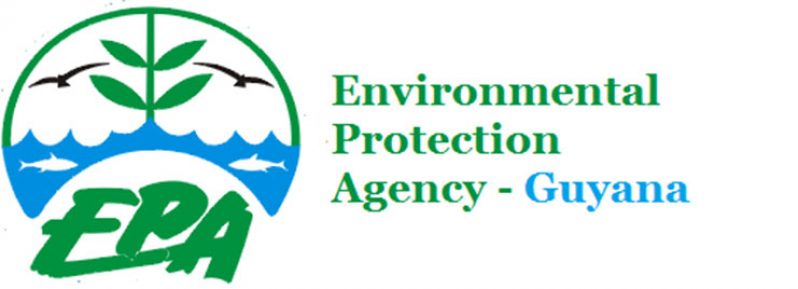WE are sure, most of you are of the view that Guyana has abundant water sources and you are certainly correct! However, many of these sources are being polluted by activities which make them unclean and unhealthy. Here is where the EPA comes in, in order to ensure the preservation of our water resources and to prevent pollution developers are required to manage their effluent (waste released). For this to be possible, there need to be standards or parameter limits set to assist in guiding them on the quality of effluent they are allowed to discharge, which will not have a major impact on our waters. Under the Environmental Protection Act, Cap. 20:05, Laws of Guyana, more specifically, the Environmental Protection (Water Quality) Regulations 2000, the Environmental Protection Agency (EPA) is mandated to set these limits.
BASELINE SAMPLING
Recently, the diligent staff of the Water Quality Management Programme Area conducted baseline sampling at several of our rivers in order to test them to develop a national industrial effluent discharge limit. The collection of this data will be useful in improving the existing standards which are interim guidelines to control discharge. The project is funded by the Canadian Funds for Local Initiatives (CFLI). The rivers where tests were conducted are the Ireng, Pomeroon, Mahaicony, Mahaica, Abary, Canje and Barima Rivers. Additionally, tests were carried out in the Demerara Watershed. These water bodies were chosen since they are; surrounded by economic activities that have high effluent discharge.
WHAT DO WE TEST FOR?
The agency recognises the importance of conducting this project since there are many new industrial activities that are taking place in Guyana which are not catered for in the present parameter limits. The parameters tested included; the levels of pH, phosphate, sulphates, coliform, suspended solids, oil and grease, biological oxygen demand (BOD), ammonia, nitrate, turbidity, potassium, mercury, copper, iron and lead. These are dangerous at certain levels and would lead to poor water quality.
The water samples that were taken are currently being tested so as to assess the levels of these parameters. After attaining the results, they will be interpreted by the EPA in collaboration with the Guyana National Bureau of Standards (GNBS). As part of this interpretation, the data collected as well as the existing data, will be reviewed and analysed to inform the setting of interim standards. The data will also be used to update the State of the environment report.
To this end, the EPA continues to take the necessary steps to protect Guyana’s many waters. The agency understands the need to set these parameter limits to ensure the control of water pollution by economic activities and other activities. This project will allow for the enforcement of the agency’s mandate to manage the water quality.
You can share your ideas and questions by sending your letters to: “The Earth Our Environment”, C/O EIT Division. Environmental Protection Agency, Ganges Street, Sophia, GEORGETOWN or email us at eit.epaguyana@gmail.com.



.jpg)








